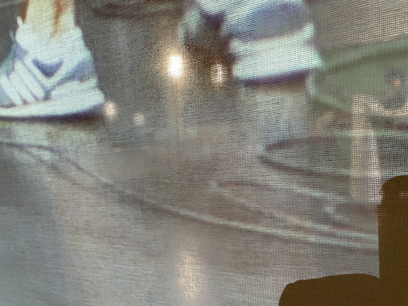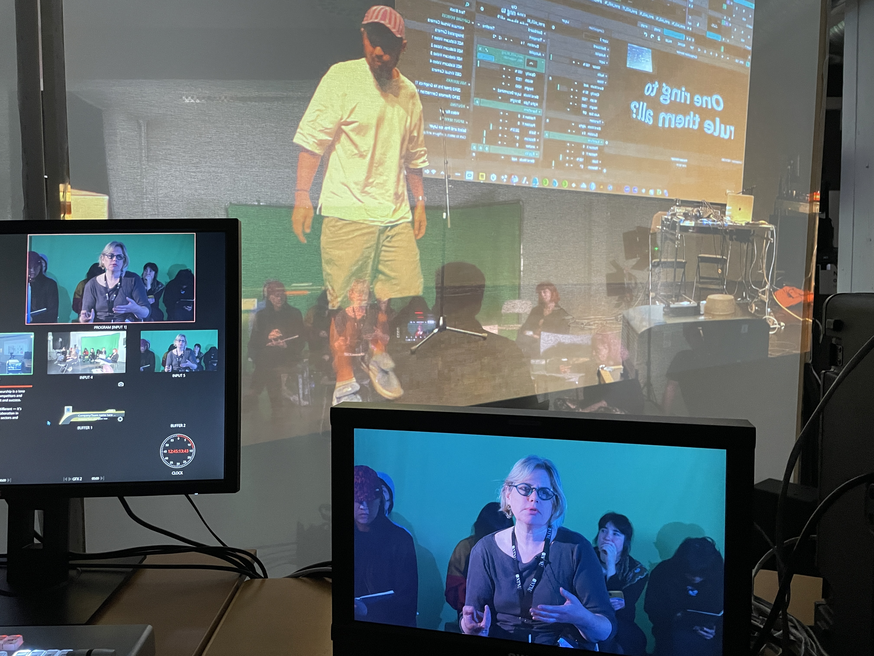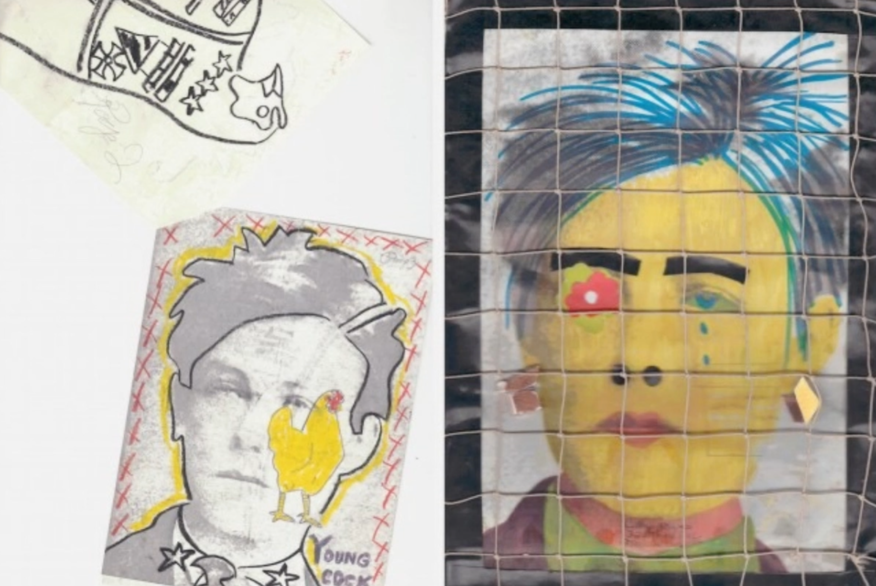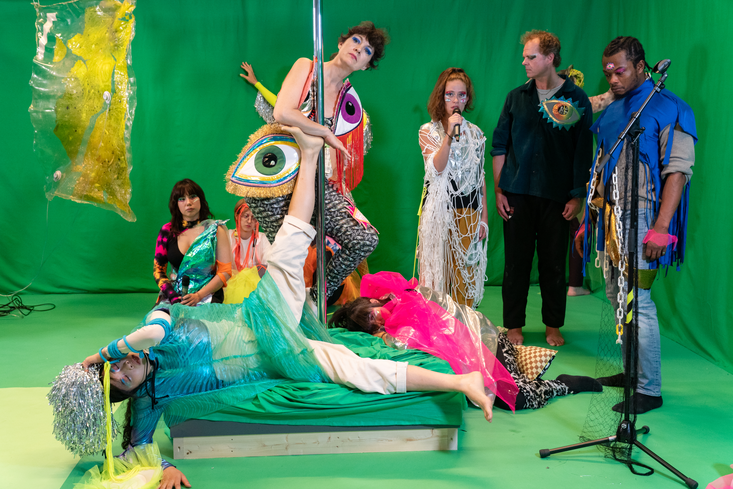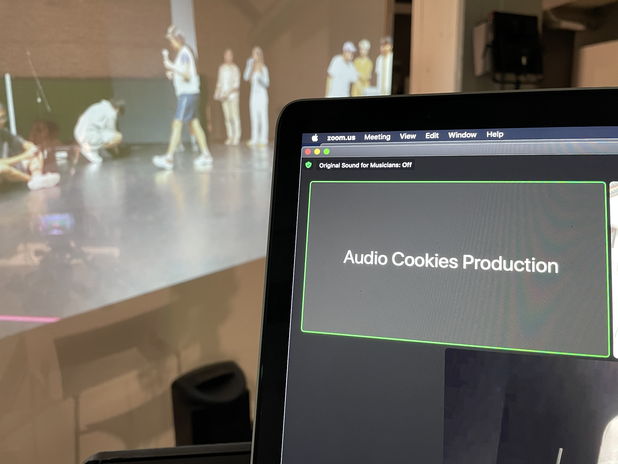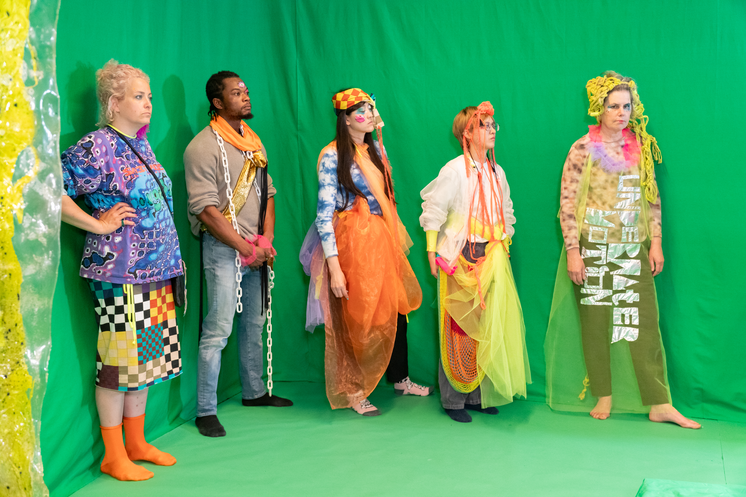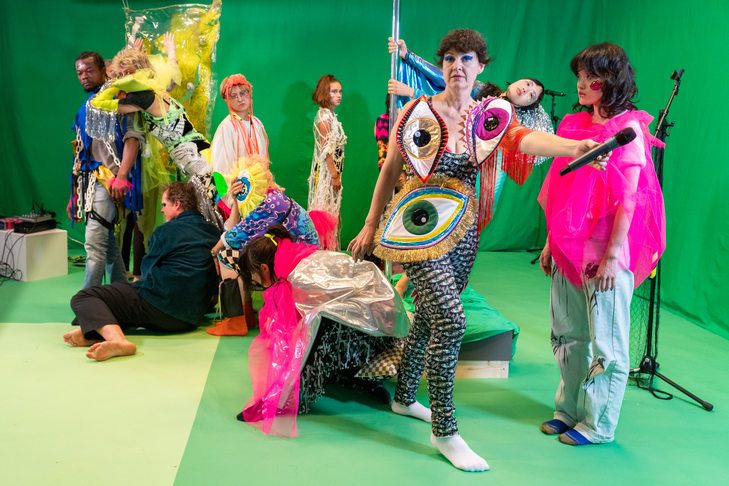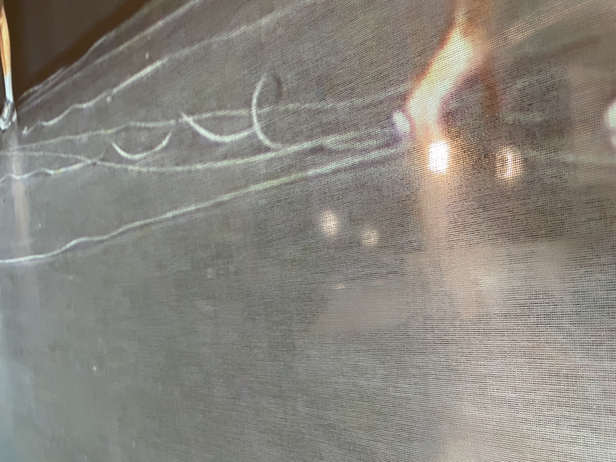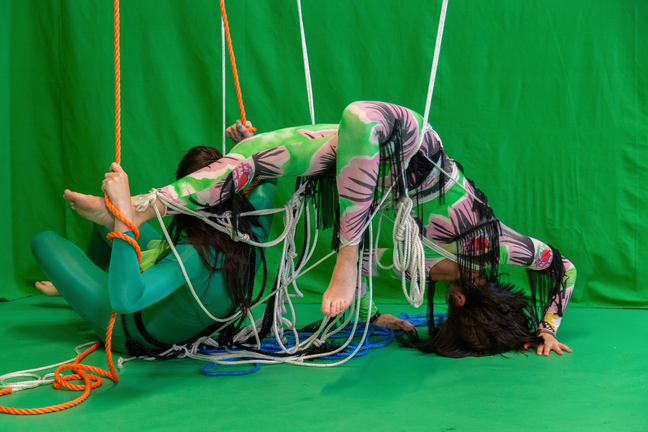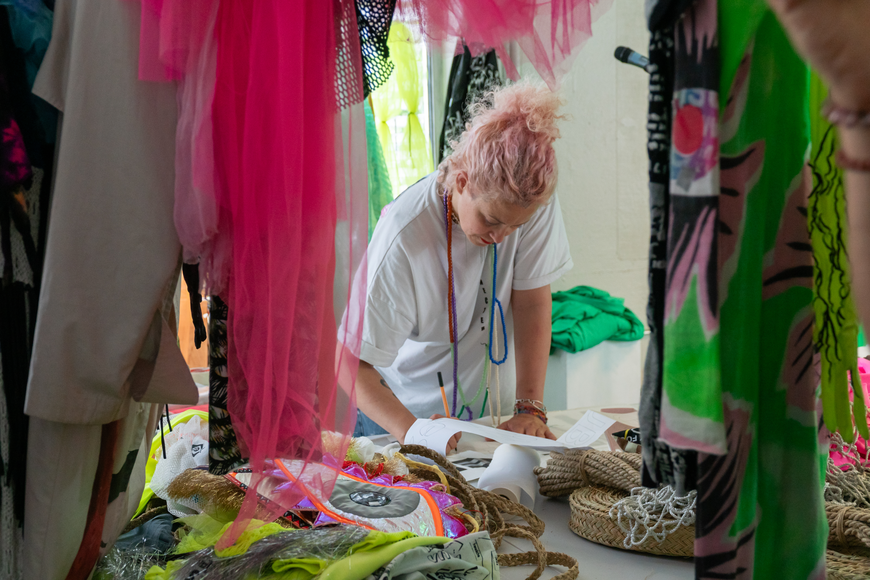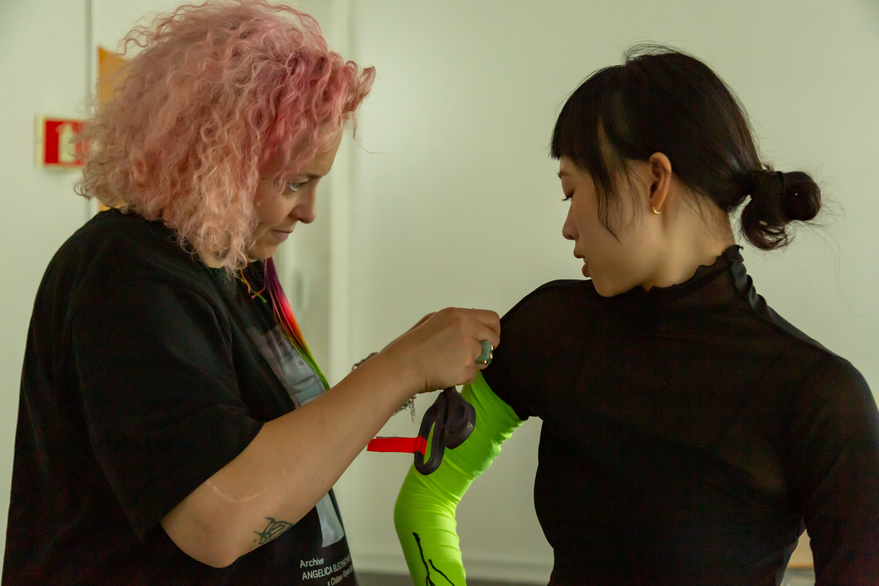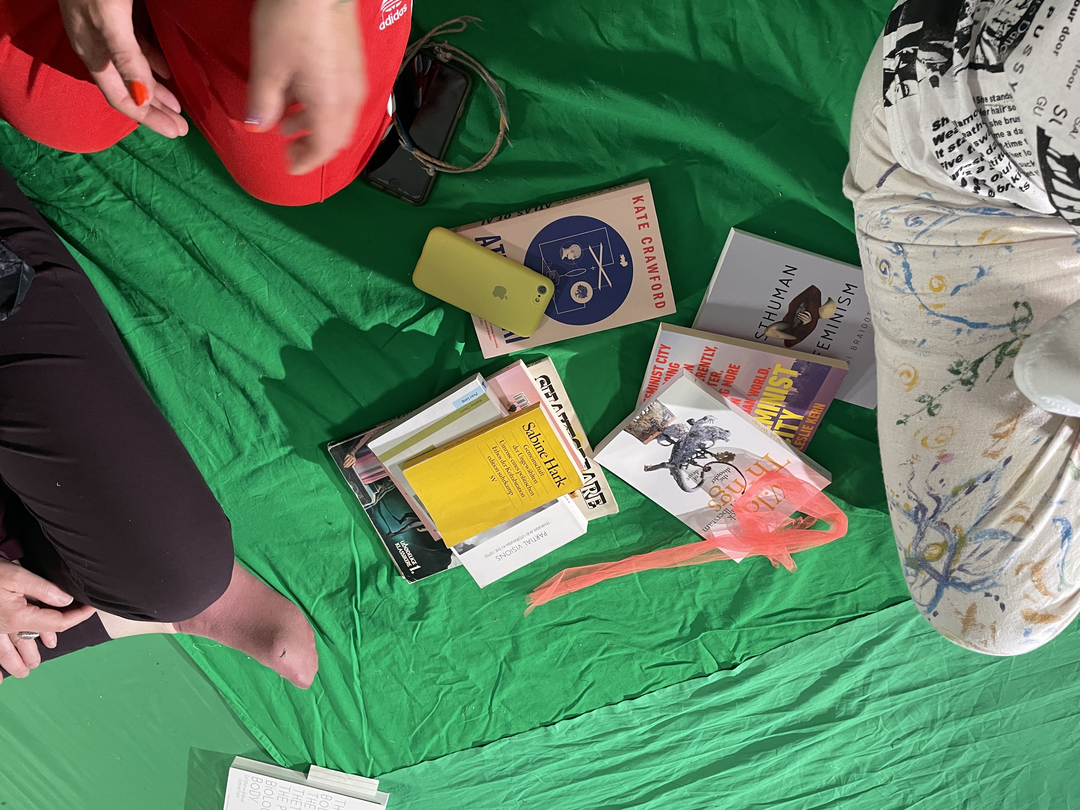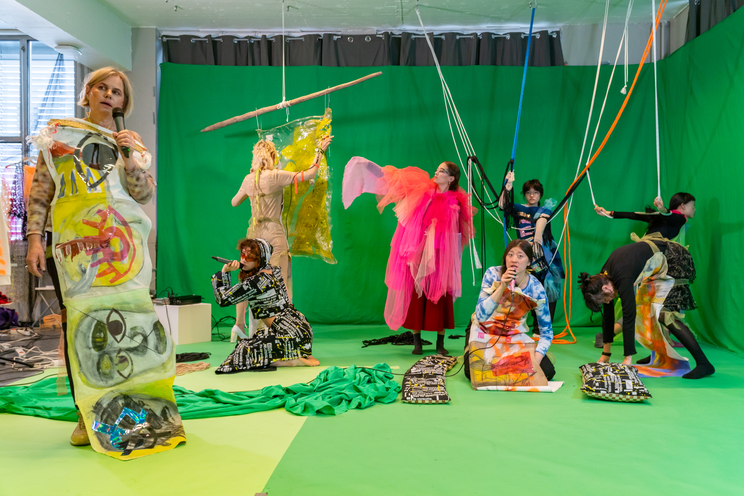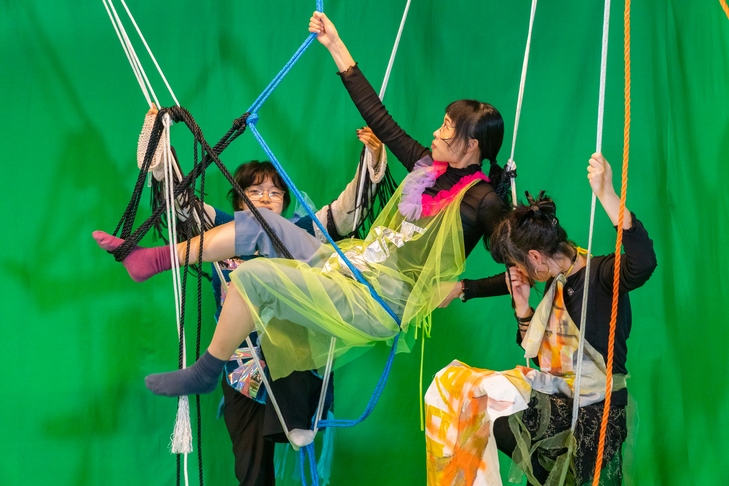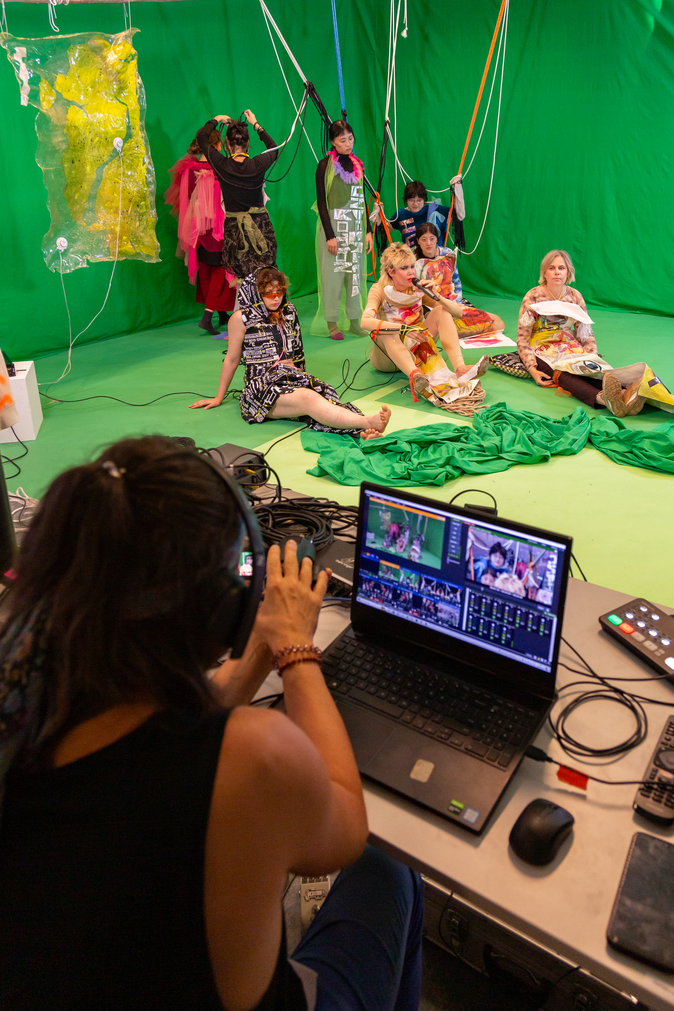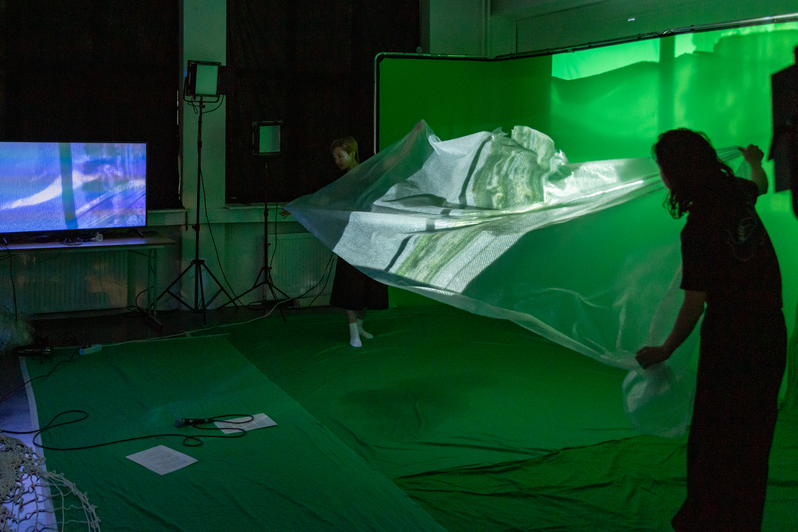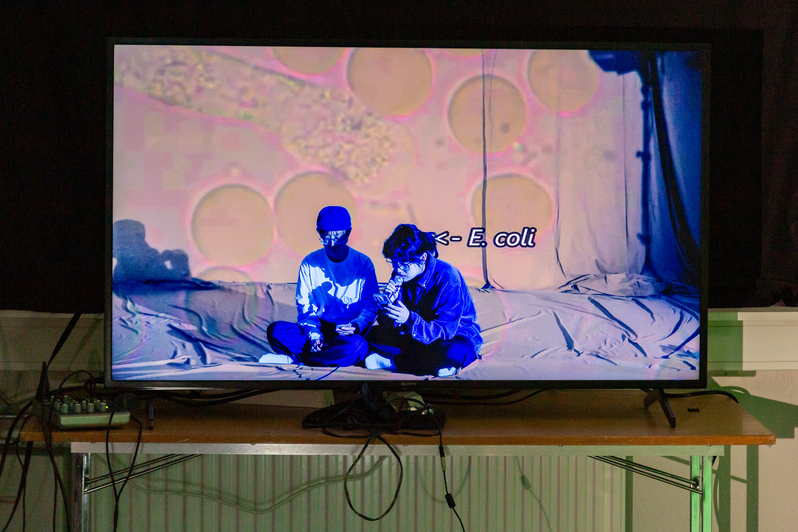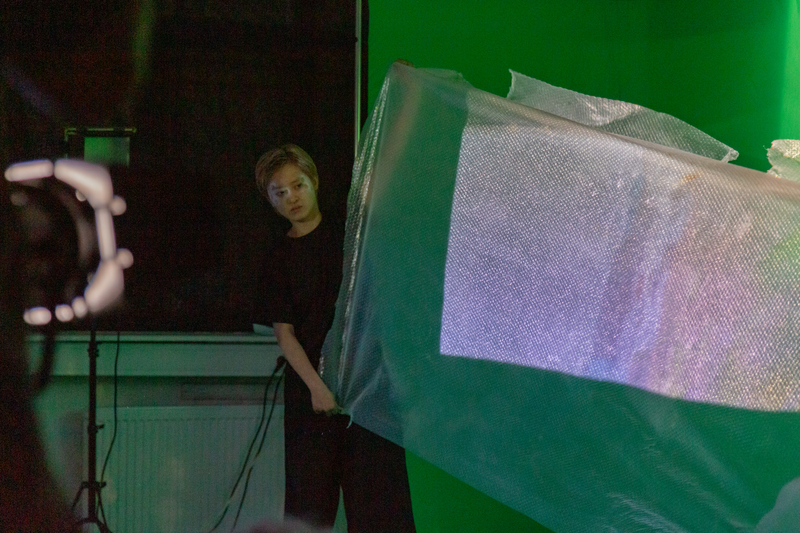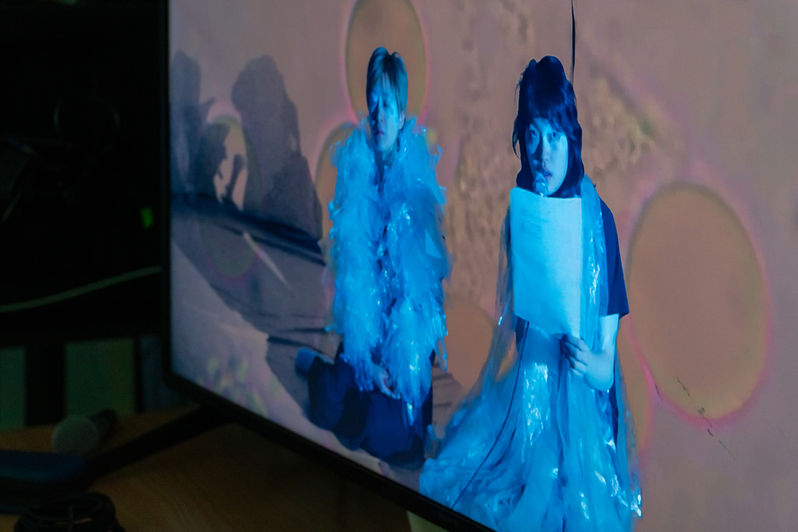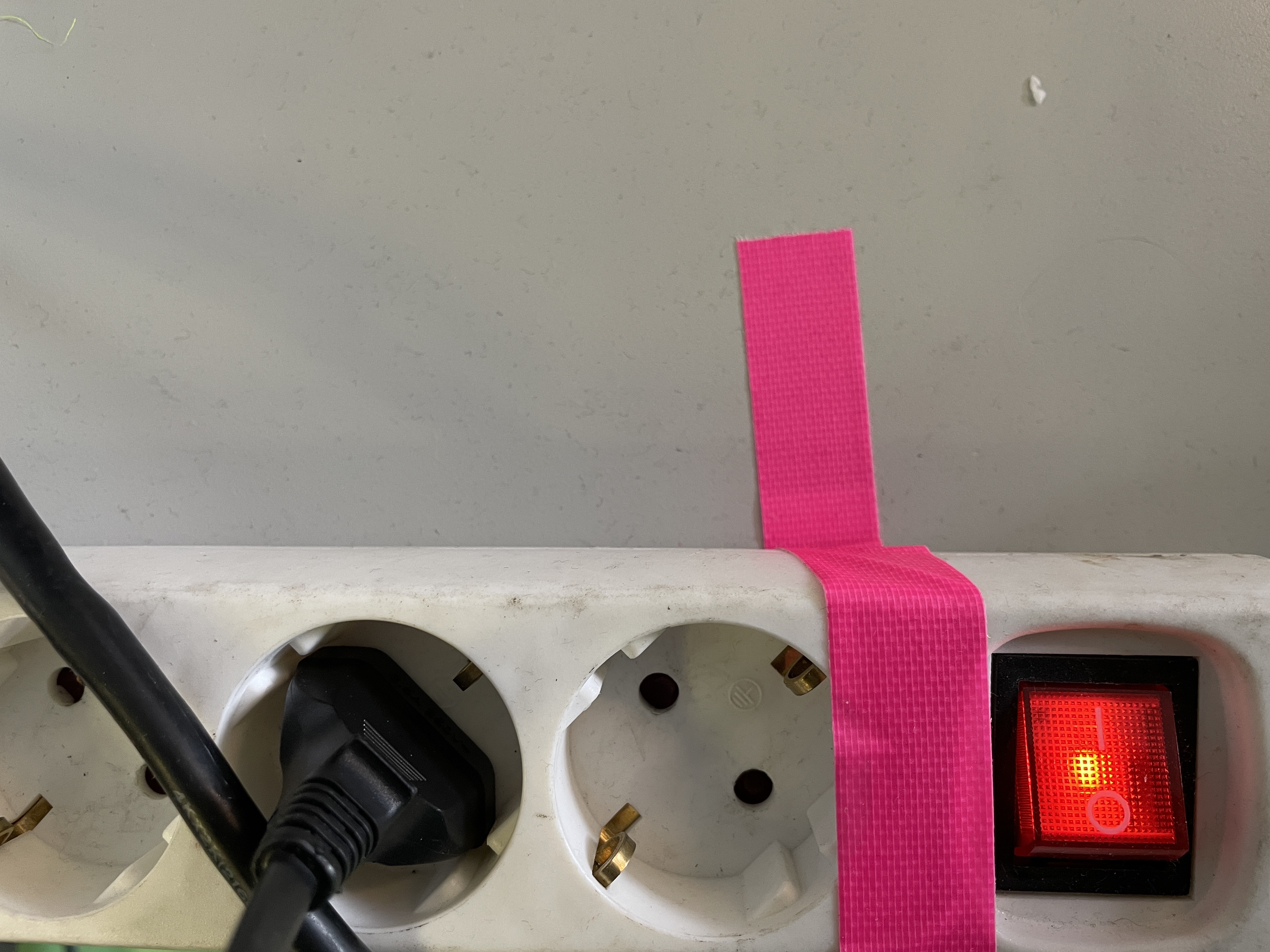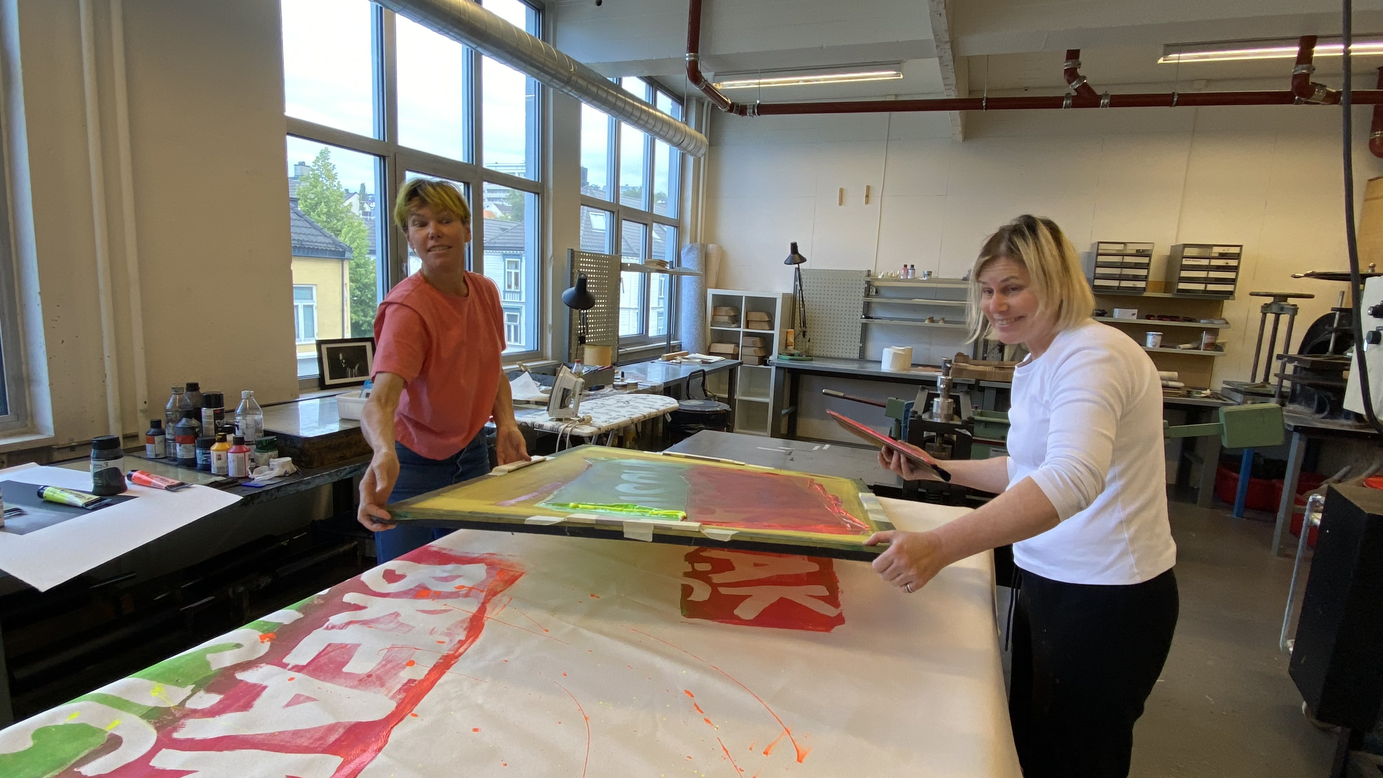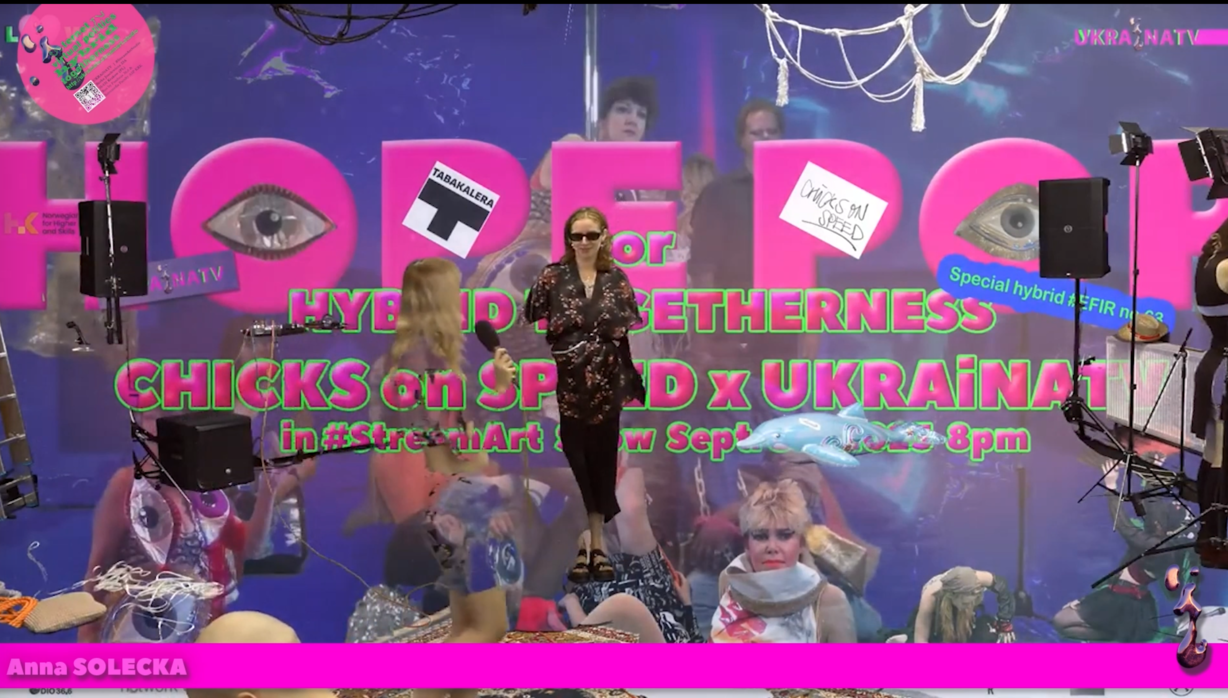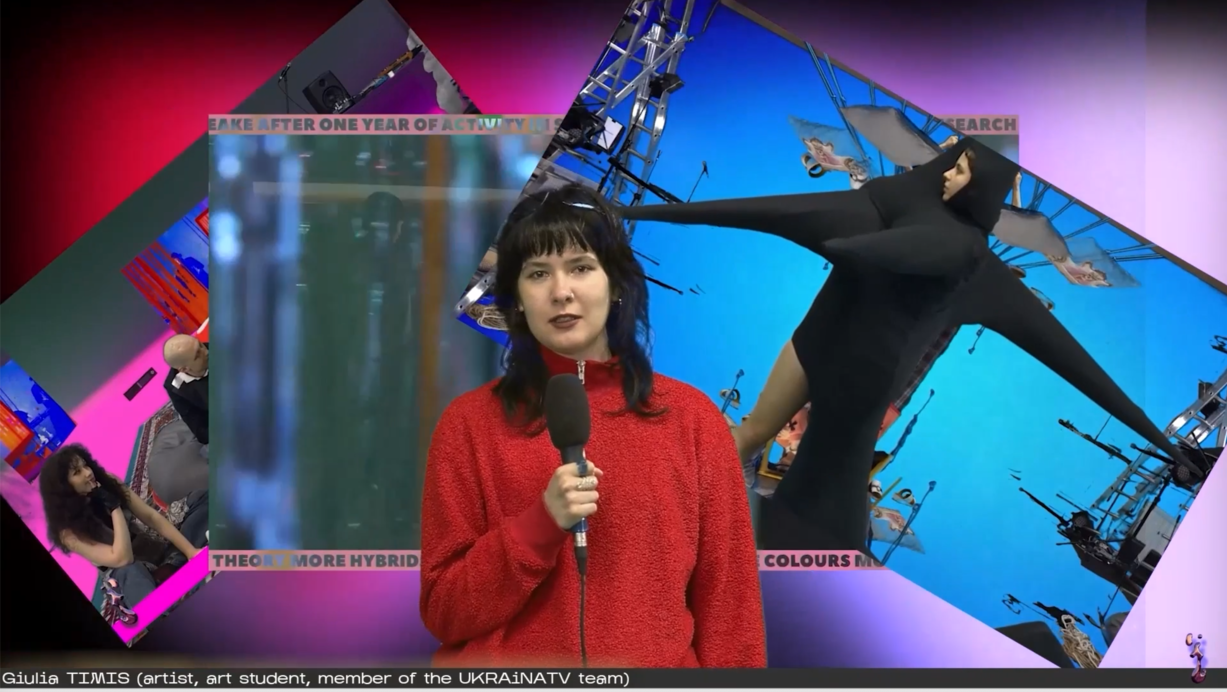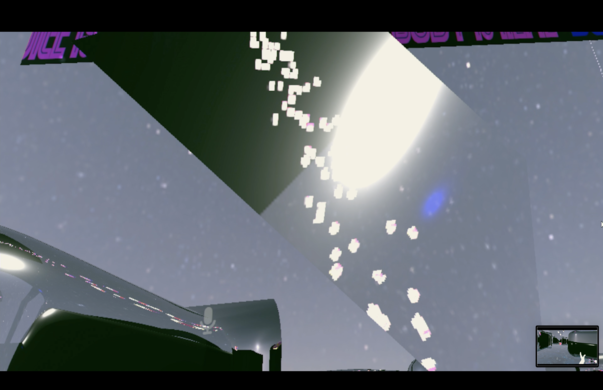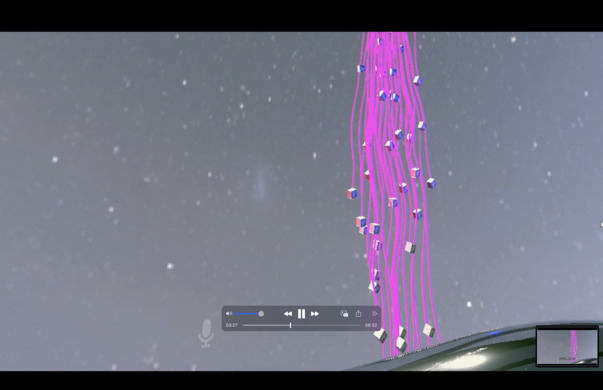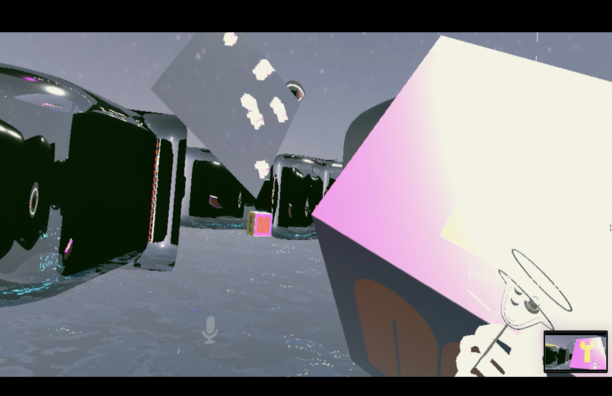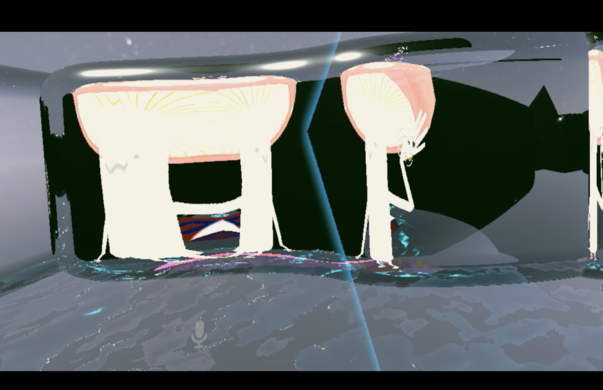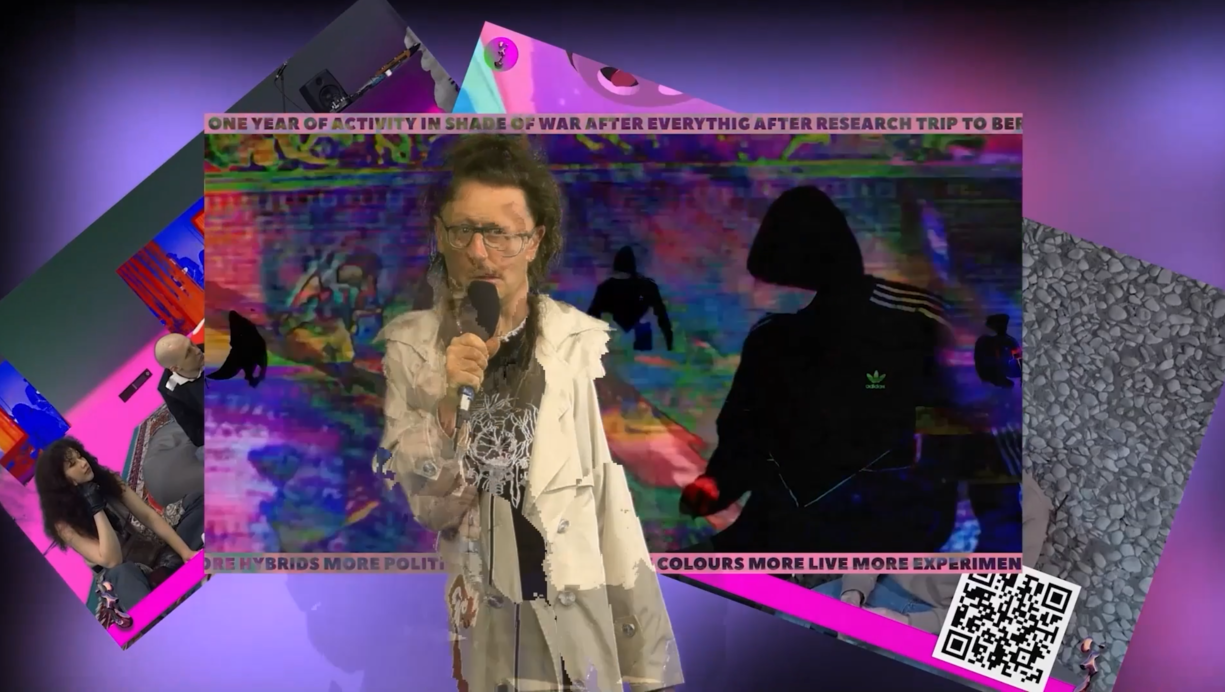network of people more important than the work the net-work
working on the net
social media
from dada
data
latency
DIY
thank for your patience
the connection broke down
we can’t see you
we can’t hear you
how to respond
have you ever sent a postcard?
a presentation without receiver
without audience
postal art
is that stil relevant? happening?
in the 1970s
maybe in the 70ties
how to imagine the 70ties?
replace zürich with the presentation
it‘s not my decision
i don‘t have any control
he will do it
he did
can we start?
turn the lights on
tv tower sending signals into the city
and you can get an image sitting on your couch
broad casting
tele matic informatics telecommunication
transmitting
information flow
what is the network?
huge set up
all cables going into one plug
a yellow cable
what do the cables transport transmit
of what are they made
around the world
google dot com
message
across the planet
get a feedback
hidden architecture
the network is a thing
an infrastructure which is ...
technoecosystem
made of soil
cable in the soil
bite through a cable
disconnection bang
ocean wire
google underwater cables
security issues
data
secured unsecured dangerous data
non-spectacular
creating experiences
through feedback
receiving
broadcasted
handshake
software plus software
abstraction
encounter
artistic live events
how does an encounter happen
what is happening when nothing happens during an encounter - which language
not words
words?
how to communicate
allowing the void
the non happening
what could happen instead
to give time space that something could happen
performers on stage
improvise
table has legs
not made for walking
mobile
not mobile
on one spot
tunnel through projection
forming a triangle
felt like sitting in one room
equalise proportion
meet with the body
really?
talking about hierarchies
on the same floor
feeling in a game
interaction
feeling of presence
in another room
telemersion
building on top
mobile screen
illusion
transparency
hologram
the act of seeing
aim at what
the way we see
what do we see
me holding the ipad
are you talking to me?
a connection between two persons disconnected
standing at one point with an ipad
choreography
perspective of the tablet
environment
speech -
versus or with movement
what is this encounter?
teletopia
there is a history
always
a window
of opportunity
login
lo
the sytem crashed
expectation
3rd space
third
one two threet
third cinema?
meta space happening
there was a dream
wanting something really different
democracy?
why should that be
a democratic room
independent room
free from companies money making
who owns this 3rd space
whom do we want to support?
apologising for time taking
time to deliver
how do we get acess
to internet two
one two three
architecture
old cables
delivery event
nonsense
method of exchange
actual objects
of how the world of objects worked
instructions
stand up
everyone‘s life
social media
instantly
now male art?
flux stamps
robert watts
playful, humour, entertainment
instagram, mail art
the flux of the day
our daily surprise
art of coding
metaphors
think about social realism
code as important part of
social realism
mail art union page
counter culture
cyber culture
subculture
anna kurera
dorothy iannone
a form of distribution
fishwork
without any message
copying circulating
generosity
VILE
correspondance art
a pile of old magazines
waiting to see what will happen
general idea
a comment on life
read VILE
publish different issues
insert oneself
foster a community
in her early 80ties
care
a name she gave herself
Ray Johnson
various art systems
mercurial
through a partial rejection
including nothings
the purpose of mail art
coming from an official source
him corresponding with people
call him up
corresponding
participation
speak on the spot
how to understand
Buddha University
collage artists
different points of ….
participating in underground art worlds
wanting to be part of the official art world
Rimbaud Project
through away gesture
call attention
go down to the methof slides to wrap this up
invitations
time based
based on a conversation
how does this work for you
how could that be useful
MAIL ART METHODS
Distribution of solo projects, publications or postcard production, information on exhibitions and events in the network, locally and internationally.
Invitations (calls for participation) to a Mail Art exhibition with a theme, a common statement of “No Return, No Jury, All Shown,” mainly shows that usually were followed by a catalogue.
Dialogue works, being works executed in response to a received piece of work
Time based (Swank was a notable New Year’s Eve mail art exhibition in San Francisco staged by Sabina Ott and Ms Elaine Neour. All mail received was opened on New Year’s Eve).
Mailings based on conversations, known interests or quirks of recipients.
Mail art was part of the counterculture of the 1960s and the 70s and now we have cyber-culture, which includes not only counterculture, but everything >>>
TELEMATIC
CONTACT ZONES.......SINGAPORE.......TRONDHEIM...........ZÜRICH.......KRAKOW
Nothing essential happens in the absence of NOISE.
change a person if you like
you find out who is copying you
don’t forget your local room
you are allowed to copy a person in your room
you still have your secret person
instead of copying a person you find a contra
contradicting energy
it’s contra, not copying
keep on going for a few more seconds
thank you
can you come back to the screen
how many microphones you have in Singapore
one open mic in Trondheim
we have four
more people than microphones
explore the materiality of this room
different incentives in the room as phenomena
you are building a composition
use materials or body
not your voice
if you find objects that are mobile
listening to each other
awareness what is happening
sensing the energy
tune in
go with the flow
go against the flow
contrast in the composition
translate acoustics to the body
choose a position in your space in relation to ….
everyone has a position
I want you to be out space
Be more quickly
Intuitive
choose a position
trondheim already started, thank you
keep your position for a second
look at the picture
but also in your body
thank you
remember the position
it looks quite comfortable
you can exacerate
you can be slow
but it should be one movement
this is about rhythm
it’s a game of response
it goes very fast
one two three
how can you contrast what you see
find a movement that is repeatable
circular movement in your body
there is no right or wrong
find the movement
an investigation
we are doing it at the same time
maybe you get inspired
not getting stuck with your own movement
again,
there is no right or wrong
you can change
exploration of your own body movements
it will be evolving
You have five minutes
try to isolate movement
it’s not about dancing
be with yourself
for the last 15 seconds
I want you to speed up
amplify your movements
thank you
don't lose your movement
22.08.2023
to define
clear off spaces
off screen
off camera
walking through the room
walk in any direction you like
walk in zig zag ways
don’t fall across cables
say hello to your colleagues
don’t talk
body hello
wave
getting seen
ominous third space
be aware of the individuals in the other spaces
please keep walking
you can stand still when you say hi
but keep walking
choose a person
in a camouflage way
keep walking
copy the gestures of a person
23.08.2023
idearobics
ideotics airobics
neurobiologists
the human organism doesn’t only
breath air but ideas
it's a mind-body exercise
going through different body parts
head is where the face is
face expression
acceptance acceptance
close your eyes
if you want
move our head
symbolise
concept to exercise
choice
choice is harder than others
shoulder
other body-part
re-shoulder
power
shouldering power
power-shoulder
acceptance choice power
confidence
consequence?
arms
how we connect the world
with
push it away
embrace
emancipate
emancipatory-embrace
embrace emancipation
it’s your choice
decision?
fingers
finer points of exercise
intuition
foregiveness
jump the power
rolling choice
breast
breathing in
love
laugh
intuition forgiveness love
jump the power
chest
processing
fullness
process and progress
breath in
laugh
laugh out loud
choice
hips
pleasure
joy
the exercise is joy
hip-hip hurray there is joy every day
confidence
jump the power
spot
flexibility
abandon the flex
i go with the flow
emancipate
feet
keep us grounded
connect us to reality
balance
the concept we want to exercise is balance
tuition
intuition
finish up
with the last body part
the back
the pain
step in the back
trust
we don’t see our back
emotional support
plenty
plenty of
love
laugh
inspiration
breathing in
APPRENDRE
APPRENDRE
LEARNING
APPRENDRE
APPRENDRE
APPRENDRE
LEARNING
PERFORMING
APPRENDRE
APPRENDRE
APPRENDRE
APPRENDRE
APPRENDRE
APPRENDRE
APPRENDRE
APPRENDRE
APPRENDRE
APPRENDRE
APPRENDRE
APPRENDRE
APPRENDRE
APPRENDRE
APPRENDRE
APPRENDRE
APPRENDRE
WORKING TOGETHER IN A CONTINOUS MODE
APPRENDRE
APPRENDRE
Study the production of these image desires and their distribution via the airwaves (oh! sirens) or cables. Study production for once, before broadcasting gets involved.
CREDITING ABÉCÉDAIRE
A democratic micro crediting system developed to represent the complex nature of the RTAI artistic research project, nurturing co-authored, crisscrossing, synthesis of the arts and the public dissemination thereof. The model is based on Eco-Feminist-Anarchist principles, imagining new ways of understanding and organising reality, unlearning and sidestepping old systems of hierarchical, virtuosic art production (their crediting & value systems) contra to co-authored, polymath and autodidactic practices which RTAI prides itself on. In future iterations of the RTAI performances/documentation/publications, the model hopes to connect to Distributed Ledger Technology (DLT). AE: Artist Educator AM: Audio Mastering AL: Advanced Lighting Practices AP: Artist Philosopher ARB: Aesthetic Rope Bondage AR: Augmented reality AT: Artist Technologist AV: Avatars BTS: Behind the Scenes CM: Camera Moves C: Craft strategies (zoom in details) CL: Clowning CC: Critical Costumes CI: Contact Improvisation CS: RTAI Case Study Project CR: Circuitous builder DP (_/_/_): Date participating DS:Dramaturgical Strategies EL: Experimenting Liveness EMP: Embodied Movement Practices EPS: Expanded Painting on set FC: Fashionable Costume OFTC: Open-source Fonts & Typograraphical composition G: Grafics / HH: Hair & hats I: Ideobics INTERC: Interconnectednessing IRLA: In Real-life artist IMTIA: Instant Messaging in Action K: Knitting LA: Live Annotation LE: Live Editing LO: Logomotion M: Musiking MAD: Mad-Mapping MU: Makeuping MR: Mixed realities NIME: New Interfaces for Musical Expression NLS: Non-Linear Scripting O: Observation O: Organisation OBKI-D: Objektinstrument Design OBKI-S: Objektinstrument Solo P: Perform or else PYS: Physicalisation PR:Propology PAM: Personal Artistic Method sharing PDI: Post Digital Musical Instruments POP: Sync & Music RNLV: Realtime Non-Linear vocalising RR: Reflection-Real-Time RD: Reflection-Delayed RS: Re-shoots S: Sonification SA: StreamArt SC: Self Casting SD: Self Direction SD: Scene design SH: Shoes SP: Screen Printing ST: Sew text S&M: Speaking & Moving SO: Social Media SP: Still photo S: Stunts S&S: Semotics & style T: Textiles TCP: Telematic System engineering TELEL: Telematic live-artist TOM: Theatre of Making TT: Theoretical Texting UP: V: Visualisation. VR: Virtual Realities VRC: VR Chat. WWS: Wood Work structures
We often imagine the Internet as something above us, bouncing through the air, in a “cloud.” Cell phone towers and satellites direct our attention above rather than below. Yet these wireless forms have almost always been connected to grounded infrastructures.
It is cable systems, not satellites, that transport most of the Internet around the world.
In Surfacing, you are a signal traveling across the undersea network. You begin on the coast, carried ashore by undersea cable. From your landing point, you can traverse the Pacific Ocean by hopping between network nodes. You might surface at cable stations where signal traffic is monitored, on remote islands that were once network hubs, and aboard giant ships that lay submarine systems. In the process, narratives about the history of the cable network, the companies that construct it, and the ecologies that it runs through will orient you in your journey.
Now we must learn to judge a society more by its sounds, by its art, and by its festivals, than by its statistics. By listening to noise, we can better understand where the folly of men and their calculations is leading us, and what hopes it is still possible to have. Jacques Attali, Noise, The Political Economy of Music, The University of Minnesota Press, 1985, Chapter one: Listening.
23.08.2023
hello everyone good-morning
short story from yesterday
it goes on for a minute
and you pass it on
you stand up and do your part
it should go forward
you don’t go back
you choose
presentation performance
however you want to call it
i do my story
one free chair in between
now we should see both cameras
i am looking at Zurich here
and then Singapore
it’s close to each other
share your story
you go across the circle
are you ready?
dog
taxi
fish
car accident
amidst, admits
i enjoy finding treasure
see if i find something of interest
i always find great pleasure in it
one day
rain
cave
no findings
still a great day
keyword is cheese and Zurich
a motive
toilet
broke up
i am waiting
where is the horse?
yoghurt
come to see a part of me
the keyword is die
bus
costomer
do want to join us?
what do you study?
film
me too
the keyword is business
confusion is part of the process
don’t worry
motorcycle
i regret i can’t be a better person
what do you remember from her story
smoke
why is everyone so tall
unrecorded
i passed the desert
forget everything i said before
keyword is office
bored fisherman wants to quit and do ballet instead
fish-ballet fishermen-ballet fishing-ballet
i’ll be there in ten minutes
by the way, i really liked the carrot-juice
hello i am Tina and i like blue
the mic is out of the frame
i asked for the next one in the background
you came in and read from your notebook
office-working
i want to be a politician
and my keyword is drag-queen
i wish i could tell the truth
and my keyword is murder
cruising through the ocean
there should be opera
pink it is
the keyword is overhead-projector
horses should be in opera
scriptwriting is very demanding
you have to make decisions all the time
decision-making as labour as crisis
decision-making, crisis
i learned the dynamic of each side
free style
it includes the verbal part
we are not used to include ourselves into this kind of process
include information
you write a new story
building on another story
the fruit the city and the wish
what is the backstory of the story
I am including myself
I decide
I love the energy of the people around me
I really wish
lunch break
how do you do that?
innersides can change outside
and outsides change innersides
change costumes
I feel very uncomfortable
my work is on fashion
you should be part of the opera
just ask yourself why not
why not sit in a crazy pink costume
what is the relationship
we need subtitles
read the gesture
I have no idea I’m just a guard
my life is so boring
I really like to travel with time
i collect umbrellas
how do you collect umbrellas
how do you look for things I don’t know
lost in translation
whisky on the rocks
I can’t drink, I am working
maybe your dog can
do you know about the umbrellas you can open secretly
I am allergic to fish
we are fish-friendly
now we know you are in a restaurant
we have a starting point to follow a script
this develops when we ask where are you heading to
we have a development now
It has the potential to move forward
thank you for your input
I wish I would make friends more easily
I heard the same thing from you over and over
change comes from your pocket
we leave everything behind
the crocodile died
how come a crocodile is running on a street
we are in a fairytale
you love hotspot
turtle-soup
you killed your husband
I wasn’t prepared to tell you
I had different roles in my life
as a life coach I can really help you
would be good to know where you are in the world
we should switch the conversation
can you describe who you are
I also do financial coaching
we don’t really have to tell the truth
what do you know more
what do you do?
do you like wearing what your are
change my life change my location
RTAI Real-Time Telematic Audiovisual Improvisation presents Shared Campus—Underwater Cables credits: (under construction CREDITING ABÉCÉDAIRE to be added after each collaborators name) in alphabetical order:
Alia Mascia aka XEROX.ED, Alexandra Murray-Leslie (Chicks on Speed), Anastasia Turcan, Ania Kepka, Anneli Røros, Annett Busch, Apex Anima aka Unnur Andrea Einarsdóttir, Ayodele Arigbabu, Benjamin Burger, Benoît Bodhuin, Branca Peixoto, Carlos Re, Casper Schipper (Research Catalogue), Daniel Spaetti, Florian Schneider, Gabrielle Geber, Giulia Timis (Institute of Network Cultures/UAITV), Gleb Dovzhuk aka Glebalisation (UAITV), Iris Meli, Jeremiah Day, Johan Haarburg, Joe Lockwood, Joshua Dekia, Julia Ł. Mazur, Kathi Glas (Chicks on Speed), Ksenia Mirgorodska (UAITV), Leslie Johnson, Liz Dom, Melissa E. Logan (Chicks on Speed), Michael Francis Duch, Miguel A. Herrera, Mohammad Bayesteh, Nasrina Ebrahim Khari, Nikolay Flotskiy, Øyind Brandtsegg, Øystein Fjeldbo, Peggy Noland & Seth Bogard, Qui Fang Huang, Roman Dziadkiewicz (UAITV), Rui Han, Sabela Peinado, Sahar Tarzi, Sara Shooshtari, Sayo Ota, Sofiia Reznichehenko, Sophia Efstathiou, Taku Mizuta Lippit, Timothy O´Dwyer, Tina Frank, Vilde Stokke, Zowie Bolan, credits not yet finished....continuing in a moment....Zurich & Singapore student participants
Telematic & StreamArt experiments across Locations: (ZHDK) ZURICH UNIVERSITY OF THE ARTS, LASALLE SINGAPORE, (KiT NTNU) TRONDHEIM ACADEMY OF FINE ART, NORWEGIAN UNIVERSITY OF SCIENCE AND TECHNOLOGY, AKADEMIA SZTUK PIĘKNYCH IM. J. MATEJKI W KRAKOWIE
RTAI Real Time Telematic Audiovisual Improvisation is a 3 year artistic research project managed by Alex Murray-Leslie out of Trondheim Academy of Fine Art and funded by: Norwegian Directorate for Higher Education and Skills
# Melissa Logan
When working with networked performing, what usually takes up much of our considerations is setting up the screen in the physical space. The other main factor is music. During the telematic summer campus we shifted away from these aspects because the screens were not on a stage for an audience to see, but rather for the other two networked locations Singapore and Zürich. The happenings were rather focused on story and scenography than on musical performances.
I am used to being in the performance as a main performer and it was an interesting shift, to work this time as a facilitator: creating space, making recordings and being a provider, enabler for the participants to shine and acting as a background force. The summer campus was a luxury situation which made possible bringing together the many aspects of performance. The screen was set up as the stage and the audience became part of it. Choreography and a method to map out and build a time line and a dramaturgy in a horizontal way. Make up and costumes merged with stage setting and sound.
Building groups was another important aspect, which grew from experimentation, body work and improvisation. All of these parts coming together could build a kind of world which draws the onlooker in as a partaker. To reach a point of total immersion is one main goal of performance. For this to happen in quite a short time was suprising. A set of performances, built by individuals working together accross the globe, partially physically together, partially not and working a with complex technical set up was a positive achievement.
The typical hurdles that need to be navigated are technical constraints or new technologies that are at the forefront of the performance. This means that the audience and the participants have the ubiquitous technology on their mind as the "star" of the show. The danger here is that the artistic work comes accross as a technological demonstration, including the glitches and computer crashes. The synchronicity and the wow moments where the performance comes across smoothly, the timing and the technique, everything works, but the attention is on the tech instead of focussing on the content, movement, the cultural aspect and the mental emotions that surround and are sucked into performance practice.
22.08.2023
we are looking for collaborative structures
horizontal in local and global scale
not based on competition
it’s fluid
multidimensional content and structure
multitasking
equipment
big empty space inside
metaphor
potential
in real time
with multi layer structure
laptop
live mix
multitasking like a metaphor
activity
how many people?
five to six
Ukrainian tv
distinction between production and presentation
movement of signals
of people
representation
dynamic movement
camera moving around you
flexible
platform
in a more global local way
try to connect
login
log out
look beyond your screen
connect machines
and people
how?
stream art studio
searching for partners
second leg
hopecore
stating togetherness
art media science
the void in amsterdam
longterm collaboration in kiev
model
of solidarity
present past future
fragile and unstable
cables
in the hotspot
north and south
hybrid togetherness
hybrid space
hybrid?
inclusivity
long after the conflict has ended
how to
chicks on speed
crazy
accelleration
i am here personally
visualisation
environment
co…..laborare
she will join us
in the next two days
we are here in front of the camera but also in front of you guys in Singapore and Zurich
powerful
inspirational
distraction
multi multi
platform
investigation for alternatives
erasmus
eduroam
more people with vision
how to connect?
find connections
what is connecting?
plug in - over layered
system umbrella
at the same time
collaborative form
now
a summer break
context of migration
context of war
multipolar
we have to deal with this
searching for a statement for collaboration
do you work together with russian artists?
please speak into the microphone
condition is a strong context
difficult
to work with people in strong context
how do you find people?
do they find you?
collaborating with everyone
hey, here is … from Singapore
flexibility in art strategies
like a looping
mixing together in real time
mixing the layers
mixing as activity
output can be input
crucial
block, censorship, ownership, regulation
hacking the existing infrastructure
more independent layers
peer to peer architectures
architecture of the software
efficiency of streaming
the power it needs to stream
consumption
catastrophe of the future
streaming effects
does streaming contribute to making things worse
very important question
more ecological
set of questions about the technology
where is the signal
embedded in contradiction?
more horizontal, more local than big techs
we need more researchers
you should see two crossing lines on the floor
where do you position your body in the space
in the relation to the camera
conscious decision
electronic
From the Batam (Indonisia) cable station, you look out across rusty brown sand and a dark blue sea. Somewhere across that water is Singapore, where the far end of the cable has landed since 2006. The station shares the shore with many other industries. Silhouettes of cranes and oil rigs rise up against the landscape. Not much farther along the coast are ship-repair yards and ferry ports. Fiber-optic signals run underneath, supporting the large-scale transfer of goods and people to and from Singapore. Part of a free trade zone, the whole area is quite lassiez-faire. The city exerts relatively little control over the information, commerce, and people that stream in and out. This is in stark contrast to Indonesia's policy for cable ships: to repair systems in coastal seas, cable companies have to apply for permits, and might wait months before being granted access.
Intuicyjnie i operacyjnie, hybrydowość dla nas to współobecność i łączenie różnych porządków i sposobów działań i obecności ludzi i nie-ludzi (awatarów, danych, maszyn) off-line i on-line jednocześnie.
hybrydowości na styku praktyk
artystycznych
aktualnych
non-dyscyplinarnych
post-cyfrowych i procesualnych
Costumes help define and distinguish characters, both for the audience and for the performers themselves. Along with projections, props and set design, it's visual storytelling. Whether you perform in costume or in "regular" clothes makes a big difference.
During one of the movement workshops with Jeremiah Day, I provided costumes for the participants - we had a pile of fabric, ready-made costumes and accessories. We started creating 5-minute costumes together, instinctively choosing and combining pieces. This was a very intense experience, as I tried to guide the participants while respecting their wishes. It was very interesting to see the difference between with and without a costume - even if it was just a piece of fabric wrapped around the body. The garment made the body move differently. It added another "dimension". I also discovered a new way of layering meaning through language on the surface of fabric, which I coined SEWTEXT, using words as a textile layer of symbolism.
# KATHI GLAS
My background is costume-making and styling, mostly for musicians and art performers. I work closely together with the artist. Starting with a moodboard, collecting ideas and finding a common language. Throughout the process of costume-making, I let the artist lead and I would guide the way through.
Most of the time, I work analog and crafty. To explore the world of telematic, digital communication and stream-art was a great experience. Students, located in three different countries would create a performance piece, in collaboration, across screens. In the Trondheim space, I set up a working station with a sewing machine and lots of different fabrics, costumes, materials and accessoires. It was an open „playground“ for the stream-art-studio and the choreography— and next door to the telematic space. So the different modes of working could fluently inspire each other.
For their final performance, the students were to work in groups of six - two people in Trondheim, two in Singapore, two in Zurich. I asked them to think of costumes they would like to perform in that would fit the groups' ideas. Together we designed pieces for their performances.
Sometimes the costume played a central role in the performance by underlining the story. Sometimes it was "just" a piece of fabric that formed a shape in the light or created the space for the performance. I tried to encourage the students to "go with the flow" and try different things. I also felt that the students from the other cities reacted differently to "our" students performing in costume. It can provide another level and another way to respond.
It was a great experience to work with different artists, teachers, musicians and students from all over the world. It showed me that combining different disciplines can lead to great art and release amazing energy.
Katong, Singapore. Long before it was a cable hub, Katong was a center of private wealth in British Malaya. Colonial elites established giant mansions, coconut plantations, and weekend villas along the waterfront in this East Singapore district from the early nineteenth century onwards. Though some of these structures have been preserved and restored, often painted bright colors, the still-affluent neighborhood has also seen some major physical transformations. The beach where you emerge from the APCN-2 network didn’t even exist before the 1970s. It was created as part of a massive land-reclamation project designed to add more space for housing on the island. Modern apartment towers and Singapore’s largest park now occupy the expanded coastal area. Soon after the artificial beach was completed, a telephone cable arrived from Hong Kong, followed by connections to regional fiber-optic networks in the 1990s and early 2000s.
# JEREMIAH DAY
I. Online Education In Context
In the midst of the recent pandemic, Italian philosopher Giogio Agamben wrote a short text titled “Requiem For The Student” in which he speculated that online education would lead to the destruction of the institution of student-hood. His argument was that student-hood was first of all the foundation and most important part of the university as a structure of building and organizing thinking, culture and “knowledge,” and that thus the ability of young people to study “remotely” with telematics technology would mean the end of defining principle of association in a place, not one’s home, to study together, with serious wider implications.
Because I indeed had my classes “go online” in 2020, and then later that year had classes start with all of the students at home, and then continued through “hybrid,” I have had some practical experiences which seemed to confirm that indeed to “go online” was an experience of loss. What was lost exactly only became clear to me later in 2021 when I asked the students: did you make new friends with people your classes while studying online? Did people help each other as much? What was interesting was that friendships and structures of mutual support could be brought “online” but that to build new connections of that nature was simply not possible on Teams, Zoom, Jitsi, GoogleMeets or that other one I always forget. Apparently all sorts of other relationships were possible, but as when the European Union leaders – in the midst of the lockdown – felt the need to meet in person, in Brussels, mutual agreement negotiated in the face of conflicts and strong wishes, was blocked by this technology.
29.08.2023
consequences
awake
assassinos
looks like a cow
change the camera
becoming so purified
take part in this ritual
papel
consecuencia
causa
what causes consequences
change ideas of time
spacial pondering
water
so, how was that?
incredible
can you check
how we gonna stop here all together
great you started to talk
nothing is running
we pay
hot water
compañeras
inside of rivers and oceans
awake
cinema is closed
caminar
stop burning
here and now
make spirits of friends
going in circles
ropes, cables
we inhabit these dimensions
without limitations
spacial boundaries
coming from water
and then we discuss everything on whatsapp
can you tell him he is off
schreibschrift, typeface, handwriting
circle writing
running in circles
glücksrad, wheel of fortunes
third space
practicar la consecuencia
movement and drawing
gestures are important
circling back
structuring really dense
more marking
framing drawing
projection behind drawing
zoom in
close up
textures of paint
overlay
digitally
projector eats colour
zoom out
image-sound, sound-image
two minutes with this background and then the next
five places
group name, your name
cleaning up
are we in the same space or not
the projector is not projecting
what is your background
caught in the net
shadows
no net
we are not good enough
at least you have to try
obvious transitions and changes
it's a local perspective
we see things building up
how do you perceive the space
everyone seems really far away
On this basis, I developed an aversion to teaching online, but this instinct quickly came into direct conflict with another principle I have adopted: to do whatever Chicks on Speed ask of me as a collaborator. Indeed, Chicks on Speed have repeatedly surprised me with unconventional shifts of roles – giving a movement based warm-up before a concert not the performers but to the public, for example – that have offered me new territory as a artist, performer, teacher and “facilitator”, for lack of a better word. This horizontal approach, in which publics and performers, students and teachers, are invited into shared moments is crucial for the role Chicks on Speed take in the academy, re-casting roles and relationships through the momentum of a collaborative working process.
It is not without interest to note that the only person I have encountered who committedly uses the word “telematics” besides Giorgio Agamben, is Alex Murray Leslie, the key organizer of the recent summer school in NTNU. But, not only does Professor Murray Leslie disagree with Agamben, on the contrary, she has built an entire pedagogic model on the assumption that telematics can be the affirmative basis for building collaborative relationships that would simply be impossible otherwise.
30.08.2023
telematic destillation
to have transition time
here in the third space
we purify the water
purify?
seems you have more power than cables
parallel encounter
sexual
power
can we stop please
we don‘t hear Singapore
love
sex
light
six
rooms
girls
two girls
two hands
meet each other
we had common
what is in common
II. Summer School 2024
With this background then, I committed to a specific and focused role in the Summer School – I would work (almost) only on the “live” component. To the group of 8 students who’d gathered in Norway I brought my own method – drawn from “new dance,” especially Simone Forti’s Logomotion – to offer structures, exercises and scores that initiate and support improvisational performance. This method, that I have developed for the last fifteen years, went well with the group, and in that way I offered a sort of parallel program to the telematics component.
Or, rather, perhaps better said a kind of preparatory program. Because indeed the highlight of my workshop came when we crossed the lines and made a telematics “jam session,” which changed my attitude to telematics in arts education. A crucial issue in performance work is the moment of making the work public, and by extension the relationship to the camera, which either considered as documentation or performed “for,” makes a kind of demand on the performer to not just only work, but rather to produce. What makes telematics distinct is that the camera is not introduced for some future viewing but rather to be seen right now, just remotely, and so it is a unique moment in which the camera can be introduced as live element, working in real-time just like all other aspects of the “jam.” In this way I could see the students take a step into a deeply committed performing that would not have been possible had it been “just us” amidst a process that also would have been interrupted by a formalized attending audience in the space.
In this way, telematics offers a new relationship to the production of video, in which the focus is on the signal rather than posterity, and an intuitive, open and risk-taking mode of work is actually supported by the imaginary public on the other end of the line, so to speak. This relationship is extremely constructive as a tool in teaching performance, because the delicate intimacy of the performance workshop can be formalized with a public moment that does not interrupt the process.
So this would seem to be a worthy addendum to Agamben’s critique of online education. Furthermore, because the context was a summer school – a limited, focused period gathering in a new place – there students had somehow, the best of both worlds, an intensive collegial atmosphere.
KNOW-HOW I WORKFLOW STREAM ART DIFFERENCES PEOPLE KNOW-HOW I WORKFLOW PLATFORMITY INFRASTRUCTURE INSTITUTIONS MODELS ENERGIA KNOW-HOW I WORKFLOW THIRD SPACES FOURFIVESIXSEVEN ANYTHING HOPECORE KNOW-HOW I WORKFLOW ELECTRONES
III. Conclusion: A New Model For Arts Education
Agamben’s critique of online education was that it would destroy “student-hood” through removing the spaces of collegiality, and limiting all relationships to “instruction.” Alex Murray Leslie has shown that telematics can offer unique potentials for developing performance with art students, and further with the unique constellation of relationships and collaborations that fly under the title “Chicks on Speed,” Murray Leslie brings a special collegial working method that brings all together, as if into a “company.” While I cannot speak to what was built between Singapore, Zurich and Norway, it is clear that Murray Leslie’s method offered those gathered to study in Norway a deep and focused experience that changed their development positively, offering a new model of how telematics can support “live art.”
RESUME, REPRENDRE, WZNOWIENIA: QUESTIONS
#Roman Dziadkiewicz
#StreamArtStudio / UKRAiNATV (UAITV)
1. The question about hybridity in a non-disciplinary perspective stems from the need to free ourselves from the anxiety that we are operating with a code word that no longer means anything. We need to develop and agree on categories that will help reformulate thinking about new ways of producing and distributing cultural content that are already happening and potentially new and different ways of influencing reality (whose power we do not yet recognize).
2. The question of STREAM ART itself, the development of a precise and capacious definition, and the DIFFERENCES between the tradition of telematic performance and stream art. In the former, I see a consistent emphasis on communication, long-distance connections of PEOPLE (in front of cameras and microphones) as the main actors of telematic performance. In practice, this usually refers to fairly static, telecommunicative and dialogic examples of screen-based (zoom-like) collaborations based on the exchange of signals. We describe stream art by emphasizing circularity - dynamic co-presence and free, multi-directional circulation of data, signals - images, sounds and people (presences) locally, glocally and globally - in real time, online and offline. We extend the subjectivity of actors to humans and non-humans. We emphasize the continuous PROCESS of multi-directional influences, mixing and overlapping of content - mixing, modeling, moderating, negotiating, combining and (co-)sharing positions, content, signals in real time to produce various interconnected temporary platforms and space-time. In addition, we emphasize the subjective and creative nature of people not only in front of, but behind the cameras and at the production table. Stream art grows out of the traditions of Vj's and Dj's, live radio and TV broadcasts, studio activities, research labs, working with signal, not just stage and doccamera practices.
3. Telematic Performance was very precisely conceptualized on the first day of the workshop in Benjamin Burger's lecture. This allows us to formulate questions about the needs for architecture and INFRASTRUCTURE to realize both models of collaboration and co-presence. What differentiates them and what they have in common, different perspectives, needs, technical and organizational problems, constraints and potentials beyond our current limits of imagination and possibilities allow us to produce imaginary tools and potential infrastructure elements needed to realize future intentions.
4. The question of infrastructure implies the question of new INSTITUTIONS and models of organization and self-organization for both formulas. Here there is no doubt—both formulas and any subsequent formula that tries to name the intuitions and needs of current creative practices along with their homelessness between traditional art institutions and the platform Internet are looking for their THIRD SPACE—between the black box, white cub (on the one hand), and you tube—PLATFORM, centralized, hermetic, neo-imperial web2—on the other hand.
5. Right next to it is born the POSTULATION to rethink PLATFORMITY and the possibility of creating one's own platforms. Platforms in themselves are not bad. They are a meeting place for people, data, avatars—but their management, ownership is dramatically badly delegated, centralized and hermetically divisive—creating a sense of loneliness, alienation and impotence and entrapment.
6. The previous three questions about Infrastructure, Institutions and Platformism inspire another one—about the new AUDIENCE / PUBLICITY (or lack thereof) for such practices. The degrees and tactics of participation and observation in the two formulas can and must take place differently, and we are probably dealing here with new, as yet unexplored axes and angles of mutual gaze, co-presence and interactions (and mutual inpacts).
30.08.2023
what hands can do
move, work, working while moving
movement as work
work on movements
moving hands
touching floating
stretching arms
enlarging
amplifying the circumference of the body
holding hands
disconnecting
rejecting
smashing
clapping
writing
caressing
sensing
duplicating
triplicating
with a sound of indifference
indifferent sound
what indifference can do
cover
the surface
hiding an abyss
foregrounding deepening void voiding
beneath the surface
cables
connections
no connection
any connection
how to connect
touch
surrounded by images and image-making
disconnecting senses
what sense
stop making sense
the camera is on
power of the image
out of focus
move the camera
off frame
hors champs
beyond
how many kilometres in between
how many cable kilos
how much giga storage
terabyte, terrabite
la terre
under
sous la terre
soil
sound sinks
goes up
in the air
clouds
pollution
electronics pollution
dry eyes
burning spear
do the sound check
just say something
test
in how many languages
ask them if thev hear you
does anyone listen
7. Another meta-postulate is to rethink NETWORKING and return to some of the tactics and models of collaboration from the pre-platform Internet. Small networks, Studios (GreenPionts as hubs for hybrid collaboration), web1 tradition, per-tu-per models, local networks, NDI, the source and potential HORIZONTALITY of the Internet inspires new possibilities for its actualization (hybrid events, hybrid co-presence in the process)....
8. The need to rethink CROSS-SECTORAL ACTIVITY—cooperation of collectives, individuals, NGOs and INSTITUTIONS for building a common non-commercially oriented, horizontal infrastructure for the production and exchange of knowledge and content on the network, treated as VALUES and not GOODS. Networking and multi-disciplinary, post/non-disciplinary experimentation. Create archives and databases for such content/remote access and manage it remotely, stimulate collaboration and co-production at a distance, share tools....
9. Study further and current HISTORY and sources for current telematic and Stream Art practices. Rethinking telematic performativity and telematicity native to the radio and television eras. The traditions and tactics of live radio and telly, MTV, Big-Borther, the Talk Show format, the formats produced in the YT, Twich, Tik-Tok, VRChat communities, as well as the subcultures and infrastructures of web-cam, sex-cam, the history of streaming intertwined with the history of independent media from the early days of the Internet... await retrospective analysis.
The telematic performance in the workshop edition focuses on exploring and extending the scenicity of performance and (classic) post-film dockwork. Stream Art also extends the causality and sublimity to non-humans and—this is very important—to those working with the technological aspects of our practices. Camera operators, creators of virtual senographies, overlays, lighting masters or—especially—real-time AV content relizers deserve special recognition of co-authorship. Stream Art works are always based on CO-authorship (of people and non-humans) and this is not an idealistic declaration, but a real condition for production and exhibition possibilities. Co-authorships (plural) are immanently based on mutual, multi-directional listening and observing of each other, empathetic connections, the evocation of shared micro-spaces and micro gestures complementing and dialoguing with each other, micro connections and multi-directional gazes. And the fact that we are almost in passing abolishing linearity and the meta-patriarchal domination of liberal singularity along with the figure of the romantic author are additional, invaluable added values for us.
The workshop also inspired DIDACTICS in a new area. In the current 2023/24 academic year, we launched the first Stream Practices / Stream Art Studio in the world at the Faculty of Intermedia of the Academy of Fine Arts KRK, focusing fully on research and didactics in the area of creative streaming, stream and telematic practices. I brought back from Trondheim a wealth of didactic ideas for working with the full spectrum of issues concerning the relationship of performance (presence), webcasting (networking) and real-time publishing or new aspects in the relationship between production and making public / showing (exhibition) from the perspective of hybrid real-time activities (and their streaming).
Stream art proposes a post-humanist view of subjectivity and causality in the processes of production and distribution (at the same time) of content. Performancne takes place not only BEFORE the cameras. The category of performance—even in a very broad sense (as Joi Macanzi proposes) is not enough. Stream Art practices take place in feedbacks between people, machines and data, in front of the cameras and at the AV mixer, behind the cameras and in between. Ultimately, the work is a process whose activation involves more than just PEOPLE on stage (or even on several, remote, physical and virtual, on different platforms and in different places (and times) simultaneously. Ultimately (insofar as there is anything ultimately in this circulatory system) performance (content, output, in the sense of: achievement) is a relationship and negotiation between inputs and outputs and the recipients and receivers responding to them (or performers in dialogue with themselves and others in the interstices of latency).... The creative entity, making choices, cuts, transitions and connections, is primarily the person doing the streaming, the operator, the person mixing the signals in real time (he/she is the dj / vj producer of the data stream here).
10. In the context of the above, another fundamental question arises about the relationship between process and product in digital content production. Within Stream Art practices, we have the opportunity to remain in a continuous circular process without giving up rich achievements (performances) documenting / archiving the next steps, segments and fragments of the practice. Sketches, visual notes, recordings, rehearsals, tests, keys, mixes, remixes, loops, successive layers, over-layers, replays, successive inputs and outputs as inputs sent to another station in another place (and time) up to elements of generativity, out of human control emulations collaborating with AI tools create a tangled universe of dialoguing data streams and ELECTRONES....
Telematics is a very capacious and yielding category for describing the processes that are at the center of our interests. But in the cluster of "telematic performance" it falls into the trap of disciplinary self-limitation of post-media potential. Stream Art calls for a new look at the fabric, the matter of art and media culture in the age of digital dominance, whose matter is the signal, the impulse, the bit of information, the ENERIGA itself—not the performer or her images. It is not this or that image, audiovisuality, aesthetic, full of errors, loops, glitches product, film, live-act, event with linear or non-linear structure that is the work. It is the circulating energy, data, electrons—the streams and consequences of their production, processing, modeling and sharing in real time that constitute the uniqueness of Stream Art not as a field, but as a formula, a way of thinking about the heterogeneous fabric of current creation, in which the non-human and the human, the energetic, the material, the physical and the virtual, concerning meat, place and SITES (the phenomenon of the studio and the network of studios) and different space-time are merged into one.
APPRENDRE
APPRENDRE
APPRENDRE
APPRENDRE
APPRENDRE
APPRENDRE
APPRENDRE
APPRENDRE
APPRENDRE
APPRENDRE
APPRENDRE
APPRENDRE
APPRENDRE
APPRENDRE
APPRENDRE
APPRENDRE
APPRENDRE
APPRENDRE
APPRENDRE
APPRENDRE
APPRENDRE
APPRENDRE
APPRENDRE
APPRENDRE
APPRENDRE
APPRENDRE
APPRENDRE
APPRENDRE
APPRENDRE
* * *
We need without a doubt: similar events—artistic and workshops in various cultural institutions around the world. We need such places, LABS—GreenPoints / GreenBoxes / MagicBoxes working together in a continuous mode, as research and creative hubs - places of telematic and StreamArt co-presence. We need creative people, collectives who want to experiment together remotely, agree on tactics, ways of doing things, time differences, specific realizations and set-ups....
It should be added at the end—everything we do is done in the shadow of neo-feudalisms, digital neo-imperialism, and in the increasingly frightening shadow of geo-political neo-imperialisms and escalating global conflicts. Russia's invasion of Ukraine, the war in Gaza, the quiet around Taiwan, the tensions between Greece and Turkey, the drama of Sudan and the weakness of the UN are hybrid World War III.... Underwater cables, pipelines and gas pipelines, information wars, humanitarian and environmental crises, the migration of people from south to north along with the migration of insecurity and restrictions on civil rights i.e. ILLEGALITY of a HUMAN who can't cross borders, can't legally work, can't get insurance, treatment, education, live with dignity are the social and organizational contexts for what we are doing—looking for opportunities to be together at least in a hybrid way.... Epidemics of depressive disorders of the z-generation—the first who are not sure of ANYTHING even in this FIRST world, the crisis of traditional gallery art are not abstract contexts either—we produce HOPECORE, meeting spaces and energetic portals.
This is not a struggle to maintain the privileged position of those entrenched in the EU. This is not the capucino-left declaring support for decolonization processes and applying symmetrism and acceptance to the oppression that guarantees them a little stability in Berlin cafes. No! These are our unpleasant and often shameful experiences of people from Central and Eastern Europe, people from SECOND (and THIRD) Europe. These are also the experiences of foreign students (and not only) in Norway stealing food in stores and eating garbage. Yes, education is still free in some places, but the threshold for access to basic living conditions is unattainable.
It's also the daily experiences of UKRAiNATV's contributors that make us look to StreamArt tools and hybrid co-presence tactics for at least ad hoc solutions, moments of hope, ideas for a new humanism, visibility of individuals, their dramas or just their little ones (like the little "i" in the middle of UKRAiNATV), personal, subjective narratives and survival tactics, working through traumas, stresses in a creative, UNLIMITED creative way.... These are still TACTICS, but we are so consistent and resolute in this, that there is hope for a new opening, new long-term and multi-directional STRATEGIES—network-oriented and horizontal, in self-organization, bottom-up, but with full support and understanding of new INSTITUTIONS. And never by ourselves. By ourselves we will never be able to do anything anymore. By ourselves we can only constitutionalize and preserve the oppressive system that has destroyed us and the planet. The left-liberal platitudes from the crystal palace about grassroots and inclusiveness are no longer enough (which doesn't mean we abandon them). They are enough today only to create exclusive enclaves of maintaining privileged positions, celebrating a sense of superiority and preserving the privileges of the (artist's) ego....
Therefore, we invite you to collaborate, play and fight, to network long-term connections. One hundred years ago, in the shadow of wars and revolutions, the most radical faces of the First Vanguard were born in Central Europe. In the 1960s, the Second Vanguard, having worked through the traumas of World War II, proposed a new interdisciplinary opening. Today, in spite of new forms of geopolitical, social and technological closure - sublimating both of these traditions—we are accelerating OPENING. In the shadow of hybrid wars, we propose to participate in the birth of a third, global HYBRID avant-garde.
(10.2023)


